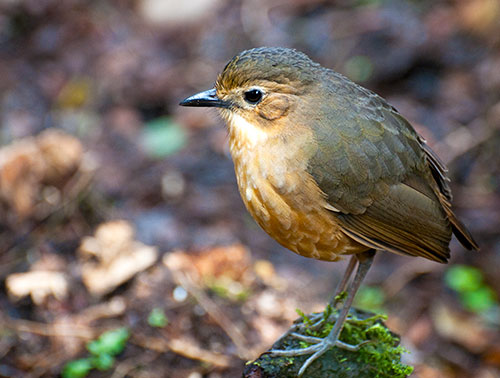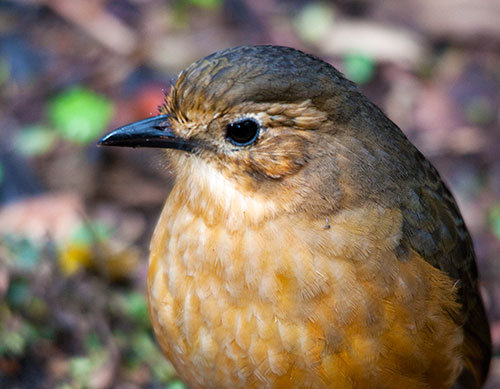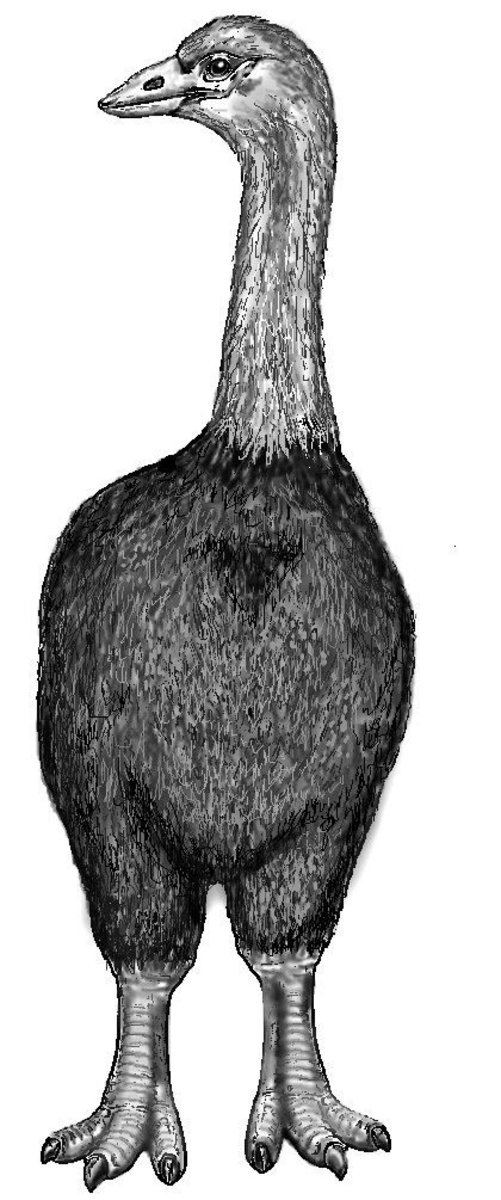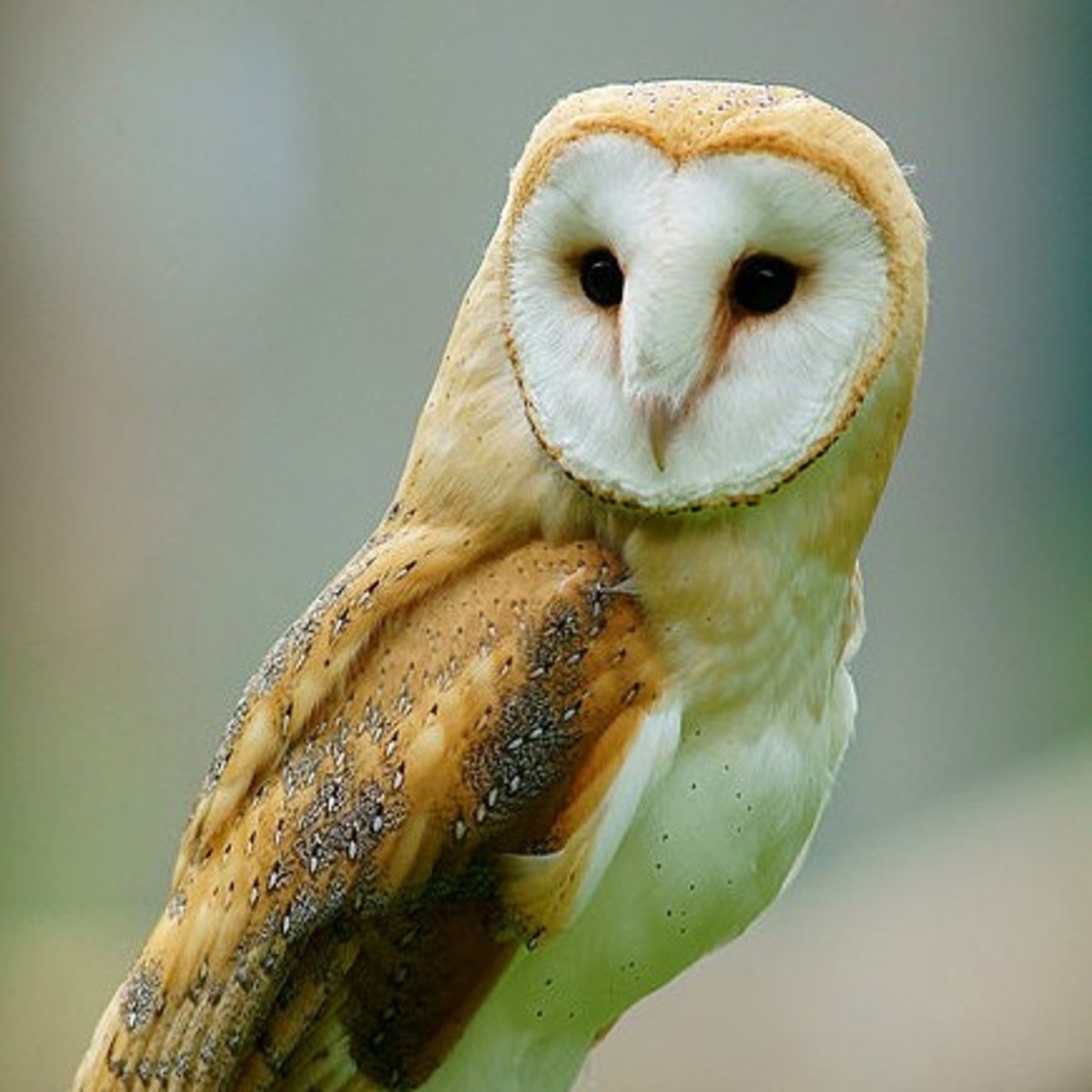Tawny Antpitta - Courageous Bird of the Cloud Forest

The Antpitta is a very shy and elusive bird that lives in the cloud forests and rainforest of the neotropics. Its haunting call is heard much more often than it is seen. The Tawny Antpitta, however, is one species of these timid creatures that appears to have a more valiant nature, often appearing along roadsides and fields of the high Andes.
Range
The Tawny Antpitta is an inhabitant of the Andes Mountains, ranging from northern Colombia to northern Peru. Within Ecuador it can be found in the paramo and temperate zones from Carchi south to eastern El Oro and Loja. Although it is less numerous in the south, it is quite prominent on both slopes of the north and the central valley and can be observed at many localities surrounding Quito. It can often be seen along roadways or perched in low bushes, calling in a low but melodious tone across the sierra.
Description
The Tawny Antpitta is a comical looking bird with its rotund body perched upon spindly legs. It almost seems as though its form never changed after it left the egg giving it the appearance of Humpty-Dumpty on stilts. This impression is aided by its evident lack of a visible tail.

This diminutive bird, about 16.5 cm (6.5 in) in length, has a homogenous dull olive brown on its head, back and wings while exhibiting a yellowish-brown undercarriage that is often streaked with olive. The Tawny Antpitta displays a whitish eye-ring and lores (region between the bill and eye) and is a bit whiter on the throat and midbelly. Both the male and female are similar in appearance.
Similar Species
Although the Tawny Antpitta has the dull plumage similar to other birds in this family, it is unmistakable when observed in the wild. There are no other Antpittas that manifest the boldness that is displayed by this unassuming creature. While its cousins will hide amongst deep cover, this brave animal will appear along roadsides and agricultural borders, seemingly oblivious to any outside threat.
Habits and Habitats
The Tawny Antpitta can be found inhabiting the woodland, scrub and borders of the upper temperate zone and the paramo on both slopes. Mainly at altitudes from 3,000 – 4,500 m (10,000 – 15,000 ft), this bird is a prominent species of the sierra and can be heard throughout the region.
It commonly appears singly, often seen hopping about in open areas but not far from cover. In the early morning it can be observed along lightly traveled roadways, frequently perched atop small trees or shrubs. This tiny creature is fairly active, bouncing along the ground or in bushes, flicking its wings and tail while bobbing up and down on its lanky legs. These jocular antics will be accompanied by habitual calls, signaling other birds of its location or of impending danger.
The song of the Tawny Antpitta is very distinctive, loudly reverberating across the sparsely vegetated tundra of the paramo. It will perch on low branches while throwing its head and neck back, straining its throat to get maximum volume and distance.
Summary
The Tawny Antpitta is an amusing bird with a haunting voice and memorable song. It inhabits the high sierra of the Andes Mountains and can be observed guarding the scrub of the paramo tundra. When visiting Ecuador it can be located in many locations around Quito, but in particular if can be found at Antisana Reserve, Cotopaxi National Park, El Cajas National Park, Pasochoa Wildlife Refuge, Papallacta Pass, Podocarpus-Cajanuma, Tapichalaca Reserve, and Yanacocha Reserve.
Other Articles by this Author
- Tyrant Flycatcher
Vermillion Flycatcher (Pyrocephalus rubinus) The Tyrant Flycatcher (Tyrannidae) is the largest family of birds in the world with nearly 400 distinct species. Of this number, Ecuador has 208 species in 78... - Club-winged Manakin - Tropical Rainforest Casanova
Club-winged Manakin (Machaeropterus deliciosus) The tropical rainforests of South America entice many naturalists to observe the abundant treasures that are hidden within its canopies. There is, however, one... - Black-tailed Trainbearer - Hummingbird with an Impre...
Male Black-tailed Trainbearer (Lesbia victoriae) There is so much to see and do in Quito Ecuador because of its World Cultural Heritage Site status. However, there are other encounters while walking the...
Related Links
- The Birds of Ecuador
Articles and photos about the birds of Ecuador - Discovering the Birds of Ecuador
Birding locations in Ecuador








